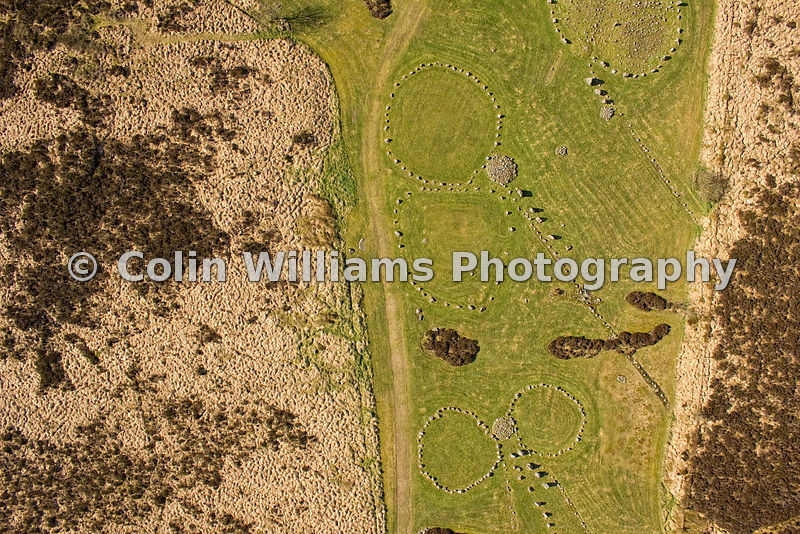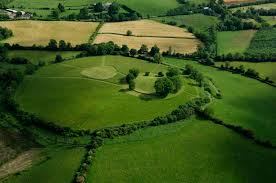Field trip
A large impressive series of Bronze Age ceremonial stone monuments was excavated from the surrounding bog between 1945 and 1949 and in 1965. The main features are the six stone circles (built of fairly small stones) occuring in pairs, with twelve small cairns which held cremation burials and stone rows all running in parallel suggesting a master plan. The 'Dragon's Teeth' is a single large circle filled with closely-set stones. Running under these features are low banks of small stones, probably derived from clearing fields for arable farming in Neolithic times. The stone structures continue to the north, under the bog. https://en.wikipedia.org/wiki/Beaghmore
In the north-west part of the interior is a tall mound, reconstituted after excavation in the 1960s and early 1970s. The earliest finds were Neolithic but the main activity was later. In the bronze Age a circular enclosure was defined by a ditch with a ring of posts inside. Later, in the second century BC, in the early Iron Age, a series of circular structures was built in this area. They had attached 'yards', all built in timber, and they were rebuilt many times, representing a long period of use. The finds, especially the skull of a Barbary ape from North Africa, point to high status involvement. The enclosures were replaced by a massive structure, 40m in diameter, built of concentric rings of large posts round a massive central post dated by its tree rings to 95-94 BC. This structure was later filled with stones and burned, and amond of sods and clay was built over the stone cairn to an overall height of about 5m. A low circular enclosure near the centre of the fort was also partly excavated, and may be an Iron Age ring-barrow. Excavation in 1998 on the enclosing earthworks indicated that they are Iron Age date, of the same period as the 40m structure, similar to those under the high mound. Non invasive surveys of the monument show that there are many more features to be recovered in future. Limestone quarrying has approached very close to the east side of the side of the site and has largely filled in Loughnashade, find-spot of the famous decorated Iron Age trumpet. The Navan Centre tells the story of Navan and the whole Navan landscape, and a visit is recommanded. https://en.wikipedia.org/wiki/Navan_Fort http://www.armagh.co.uk/navan-centre-fort/
text from : A Guide to the Historic Monuments of Northern Ireland in state care, NIEA, Belfast, 2009, 146p. |




